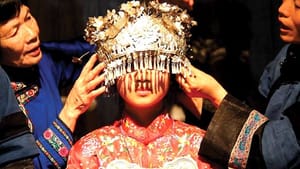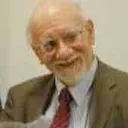Stay in the Loop
BSR publishes on a weekly schedule, with an email newsletter every Wednesday and Thursday morning. There’s no paywall, and subscribing is always free.
Linking the centuries
The Philadelphia Orchestra premieres Tan Dun's 'Nu Shu'

In the late 19th century, composers like Dvorak and Kodaly recorded the folk musicians of their native lands and wrote orchestral works based on their researches. Tan Dun takes the process one step further: He films the folk musicians of China and plays the resulting footage with the orchestral music it inspired.
The result is an interaction that illuminates both types of music and forms moving, thought-provoking links between the musicians of the countryside and the musicians in the concert hall.
Tan Dun’s 2003 work The Map: Concerto for Video, Cello, and Orchestra contains a passage in which a street dancer shows off his stuff on the screen while the cellist, at the front of the stage, engages in a frenzied display of instrumental virtuosity. The dancer and the cellist come from different cultures but they are satisfying a “see-what-I-can-do” impulse that runs through every musical tradition.
His newest work delves into a profound subject — the secret lives of the nameless women who have sustained every civilization mankind has created. The title, Nu Shu: Secret Songs of Women, refers to a language spoken only by women and passed from mothers to their daughters. The culture built around Nu Shu includes visual elements such as sewing and calligraphy, in addition to music. Tan Dun includes all of it in the short films, or “micro films,” projected on three screens.
The bonds among women
The 13 episodes in Nu Shu focus on the lives of the women and the songs that transmit their traditions and express their feelings. Most of the segments deal with relationships between women — mother to daughter, sister to sister, grandmother to her descendants. There is one segment devoted to weddings, but it is the only indication the male half of the human race plays any role in these women’s lives. A wedding (which traditionally takes place at 15) is supposed to be the happiest day in a young woman’s life, but it’s followed by three days of weeping. The scarf that catches the tears becomes a permanent link between mother and daughter.
Nu Shu is a true multimedia work: Remove any element and it wouldn’t work. The orchestra part probably wouldn’t work by itself, but it can’t be dismissed as mere background music for the films. It interacts with the traditional music and comments on it.
The solo harp fulfills the same functions. The Philadelphia Orchestra commissioned this piece, in conjunction with Japan’s NHK Orchestra and Amsterdam’s Royal Concertgebouw Orchestra, as one of three new works that would feature leading orchestra musicians. Tan Dun composed it with the orchestra’s principal harpist, Elizabeth Hainen, in mind, and she worked with him while he was writing it.
Nu Shu is a symphony, not a concerto, so there are sections in which Hainen simply plays along with the orchestra. But there are other sections in which she takes the lead. In addition to demonstrating her prowess with standard Western harp techniques, she takes on the Asian techniques that Tan Dun has included among the hurdles that composers traditionally set in front of master soloists.
But the music she plays is only one aspect of her contribution. The physical presence of Hainen and the orchestra is an important part of the visual element in the composer’s conception. In his notes, Tan Dun says the micro films represent the past, the orchestra represents the future, and the harp “acts as a bridge to connect the past with the future.”
A final unity
The last section unites the musical and visual elements into a single grand statement. It opens with a hand slapping water; then, as the camera widens the field of vision, we discover that the women are singing as they wash clothes in a river, enjoying themselves in spite of the sorrows depicted in many of the early sections. Only now, as their voices fill the hall, they are singing with a great orchestra. And they are joined, in the center of the stage, by a woman who serves as the visible manifestation of the potential locked within all of the women who have maintained all of the villages of mankind.
It is one of the most moving finales I have experienced in a concert hall. In one stroke, Tan Dun honors the sacrifices and achievements of the past, and connects it to the future now under creation in China, India, and most of the other places Westerners once called the Third World. That mammoth advance in the life of the human species — and especially in the lives of women — is the central development of our time. Tan Dun has given it an artistic expression worthy of its magnitude.
What, When, Where
Philadelphia Orchestra: Tan Dun, Nu Shu, the Secret Songs of Women, Symphony for Micro Films, Harp, and Orchestra. Elizabeth Hainen, harp. Philadelphia Orchestra, Yannick Nezet-Seguin, conductor. October 31, 2013 at Verizon Hall, Kimmel Center, Broad and Spruce Sts. (215) 893-1999 or www.philorch.org.
Sign up for our newsletter
All of the week's new articles, all in one place. Sign up for the free weekly BSR newsletters, and don't miss a conversation.

 Tom Purdom
Tom Purdom